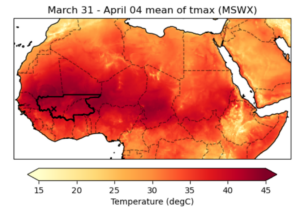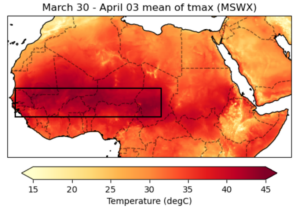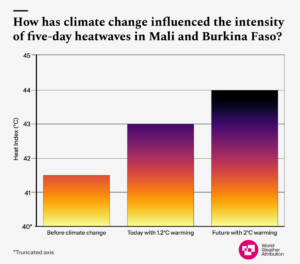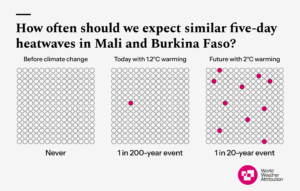Extreme temperatures were reported across the Sahel, including in Senegal, Guinea, Mali, Burkina Faso, Niger, Nigeria and Chad. In many of these countries power cuts occurred during the heat episode, making it especially difficult for the population to cope with the extreme temperatures.
Heatwaves are arguably the deadliest type of extreme weather event and while the death toll is often underreported and not known until months after the event, a surge in hospital admissions and deaths were reported from the Gabriel Touré hospital in Bamako, Mali between 1-4 April ().
The hospital recorded 102 deaths over the four-day period, which is significantly more than expected – in April 2023, the hospital recorded 130 deaths over the entire month (). While statistics for the cause of death have not been reported, around half were over the age of 60, and the hospital reports that heat likely played a role in many of the deaths. Furthermore, up to 44 bodies were buried in one cemetery in Bamako on Friday 5 April after the weekly service ().
Scientists from Mali, Burkina Faso, Mozambique, the Netherlands, Sweden, the United States and the United Kingdom collaborated to assess to what extent human-induced climate change altered the likelihood and intensity of the extreme heat across the Sahel. Our analysis focuses in detail on the countries that had the highest temperatures, especially also over night and the large reported death toll: The southern part of Mali and Burkina Faso (fig. 1a). Here we look at the 5-day maximum and minimum temperatures over the March to May season and in April respectively. In addition we analyse the 5-day maximum temperatures in March to May over a larger
region (fig. 1b; 10 to 17°N, 16W to 20°E) encompassing the most affected parts of Senegal, Guinea, Mali, Burkina Faso, Niger, Nigeria and Chad.




